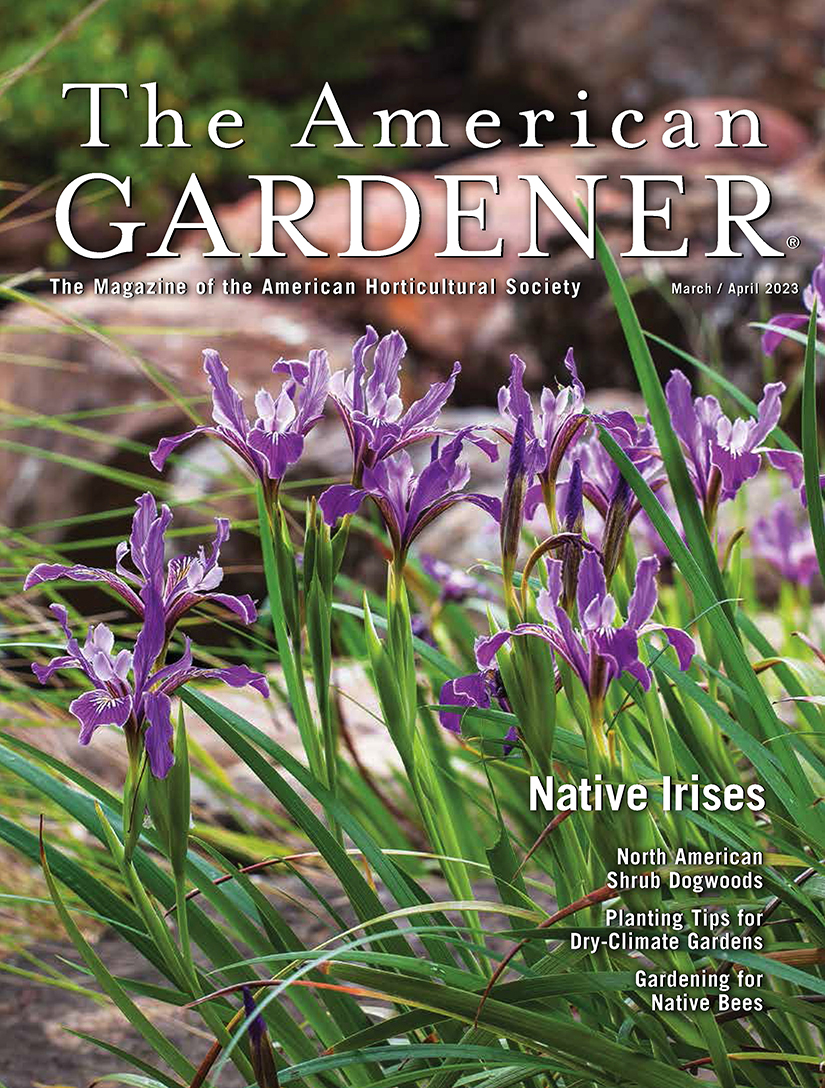March/April 2023

AHS MEMBERS log in here to view the digital edition
Not a member of AHS? JOIN US to read the entire issue online, and also receive 6 printed issues a year.
Please allow 2 business days for your membership to be processed.
*All articles with orange titles are open to the public to read.*
Features in this Issue
Indulge in Native Irises by C. Colston Burrell
Native to a wide variety of natural habitats, North American irises can be found for almost any garden setting.
Dry Climate Garden Design: Plant Placement by Noelle Johnson
While many landscape design elements apply to all types of gardens, those who live in dry cllmates need to incorporate some unique regional features to create a lovely and functional space.
Wildlife-Friendly Native Dogwoods by Alan J. Branhagen
If you’re looking for shrubs to encourage wildlife, there are several native dogwoods worth consideration in the garden.
Gardening for Native Bees by Jessie Keith
North America’s native bees are under threat from habitat loss, pesticides, and climate change. Here’s what gardeners can do to help.
In Defense of The Courageous Gardener by Marianne Willburn
Instead of continuing down the same gardening path this year, we need to open our minds and play like children in the natural classroom—cultivating a joyful spirit of curiosity and courage, right along with the carrots.
Highlights from our Departments
News from the AHS
AHS co-sponsors webinars from New Directions in the American Landscapes, three new staff members join the AHS’s leadership team, the AHS’s annual Spring Garden Market to take place at River Farm in April, River Farm is part of tours during Historic Garden Week in Virginia, invasive weed removal underway at River Farm, and more.
AHS News Special
Meet the recipients of the 2023 Great American Gardeners Awards and Book Awards.
One on One With…
A Q&A with former AHS executive director Keister Evans, who oversaw the AHS’s move to River Farm in 1973.
Insect Insights
Learn about the quirky behaviors of treehoppers, leafhoppers, and planthoppers.